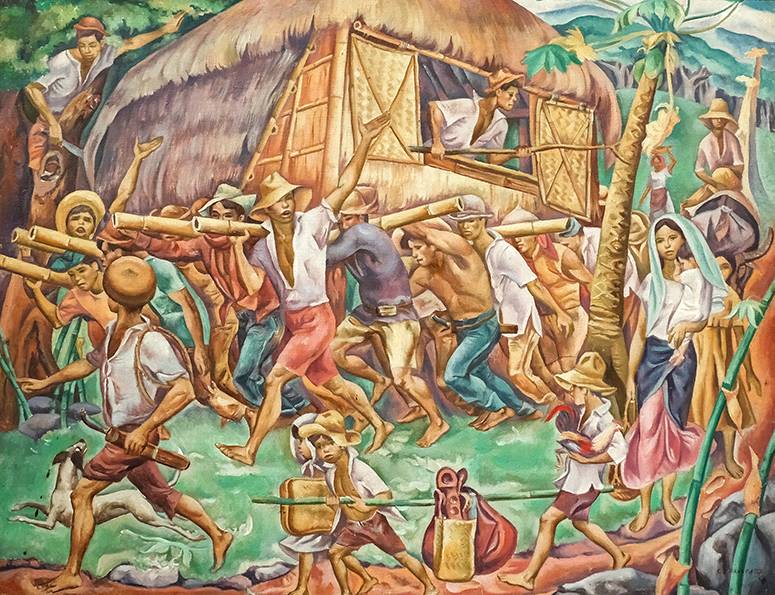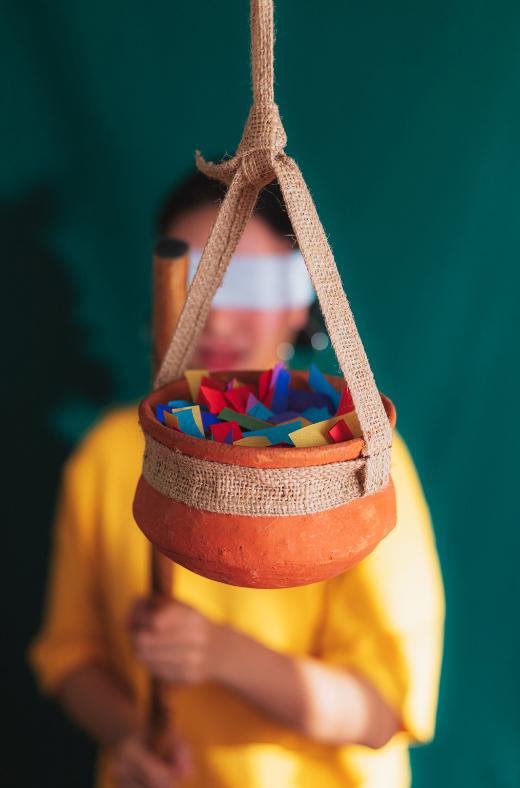‘Bayanihan’ by Carlos ‘Botong’ V. Francisco is a cinematic celebration of the Filipino community spirit.
In the lush, tropical landscape of the Philippines, an age-old tradition has long exemplified the heart of Filipino culture: bayanihan. This powerful concept of communal unity and cooperation has deep roots in the country’s history and continues to shape Filipino society both at home and abroad.
From Nipa Huts to Nation Building
The term “bayanihan” comes from the Tagalog word “bayan,” meaning town, nation, or community. Traditionally, it referred to the practice of literally moving a family’s entire house to a new location. Neighbors would gather to lift the nipa hut on bamboo poles, carrying it to its new site. This extraordinary act of communal assistance symbolized the spirit of civic unity to achieve a common goal.
Weathering Storms Together
While the literal house-moving practice is rare in contemporary times, the spirit of bayanihan remains alive and well in Filipino society. Today, it manifests in various forms. When typhoons, earthquakes, or other natural disasters strike, Filipinos quickly mobilize to provide aid, shelter, and support to affected communities. Local initiatives like cleaning drives, tree planting, and building community facilities often rely on the volunteer efforts of residents. Communities come together to raise funds for individuals facing medical emergencies or other personal crises. The bayanihan spirit is also evident in efforts to preserve and promote Filipino cultural traditions, arts, and heritage.
A Global Village of Filipinos
For the millions of Filipinos living and working overseas, bayanihan takes on new dimensions. Filipino associations organize cultural events, provide support networks, and assist newcomers in adjusting to their host countries. Overseas Filipino Workers (OFWs) send billions of dollars back home annually, supporting extended families and contributing to the national economy. When calamities strike the Philippines, Filipino communities abroad quickly mobilize to send aid and support.
Pixels and Pesos: Bayanihan Goes Digital
The internet and social media have given bayanihan new platforms to thrive. Crowdfunding campaigns for various causes gain traction through social networks. During crises, Filipinos use social media to spread critical information, coordinate relief efforts, and locate missing persons. Online groups foster connections among Filipinos worldwide, preserving cultural ties and providing mutual support.
Adapting Tradition to Modern Realities
As Philippine society becomes more urbanized and globally integrated, the nature of bayanihan continues to evolve. While some argue that the spirit of community is waning in the face of modernization, others see it adapting to new realities. The COVID-19 pandemic, for instance, sparked innovative expressions of bayanihan. Community pantries popped up across the country, allowing people to donate or take essential goods based on need. Online initiatives connected volunteers with vulnerable populations for grocery deliveries and other assistance.
The Enduring Spirit of Togetherness
As the Philippines navigates the complexities of the 21st century, bayanihan remains a crucial part of its cultural fabric. While its forms may change, the core values of compassion, unity, and mutual support continue to resonate with Filipinos of all generations. In a world facing global challenges, the spirit of bayanihan offers a powerful model of community resilience and cooperation. It reminds us that our strength lies not in individual efforts alone, but in our capacity to come together and lift each other up—much like those neighbors of old, carrying a home to new grounds and new beginnings.






